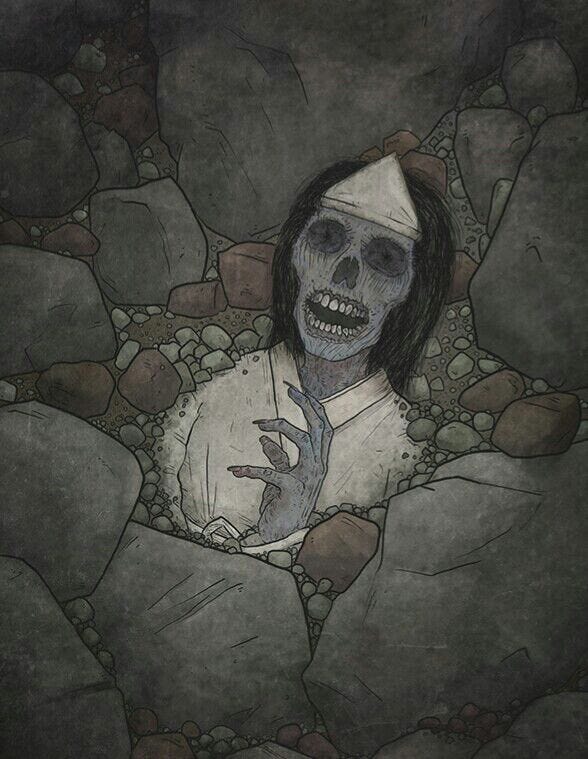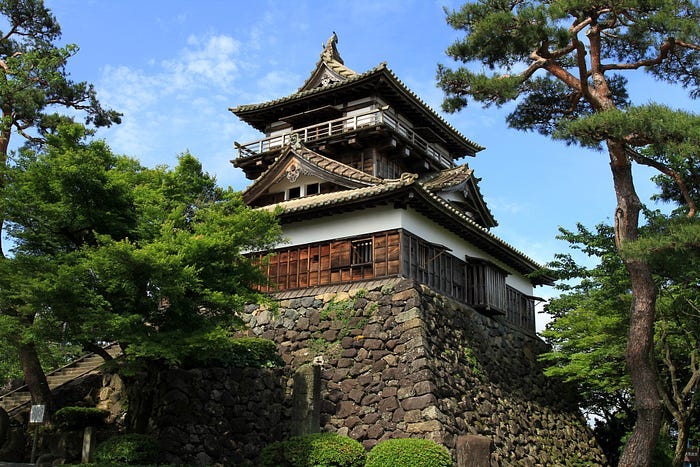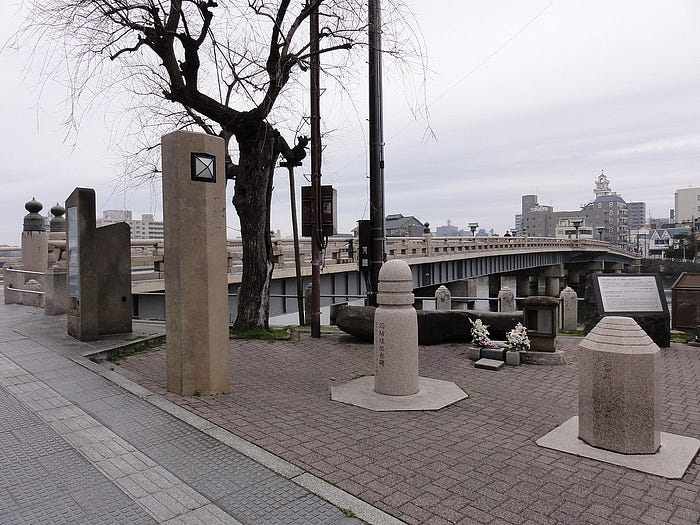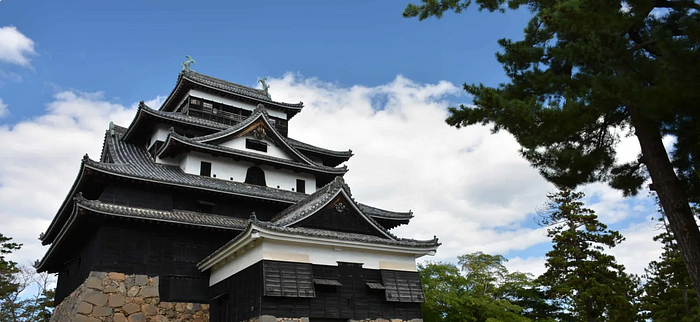Yōkai : Hitobashira (人柱, human pillar)
The gruesome act of burying a living human being in the foundations of important buildings such as castles, bridges, dams, and tunnels.
Hitobashira (人柱, human pillar), a practice dating back to ancient times through the 16th century and even into the 20th century, involved the gruesome act of burying a living human being in the foundations of important buildings such as castles, bridges, dams, and tunnels. This sacrificial ritual was believed to serve as a powerful ward, appeasing nature spirits and protecting the structure from various disasters, both natural and man-made.
The term “hitobashira” translates to “human pillar,” although its meaning goes beyond a literal interpretation. In Shinto tradition, pillars hold significant symbolism, as kami (deities) can be enshrined in pillar-like sacred trees, and the oldest shrines were constructed upon pillars. Here, “bashira” refers to the counter word for kami, indicating a connection between the sacrificed human and the building’s spiritual essence. The individual would become a tangible pillar while also serving as a conduit to the gods. To honor the hitobashira who underwent this ritual, small stone memorials were often erected near the site.
Maruoka Castle
Several legends are associated with hitobashira, including one linked to Maruoka Castle in Fukui Prefecture, Japan. During the castle’s construction, its walls repeatedly collapsed despite numerous repairs. It was decided that a sacrifice was necessary to stabilize the castle, leading to the selection of a poor, one-eyed woman named Oshizu to become the hitobashira. In return for her sacrifice, she was promised that her son would be granted the status of a samurai. However, before this promise could be fulfilled, the castle’s lord was transferred to another province, leaving Oshizu’s hopes unfulfilled.
Following Oshizu’s sacrifice, the castle’s moat began to overflow annually during the heavy spring rains. The people of Maruoka attributed this phenomenon to Oshizu’s vengeful spirit and referred to the rain as “tears of Oshizu’s sorrow.” To pacify her spirit, a cenotaph was erected within the castle grounds as a gesture of respect and appeasement.
Matsue Ohashi Bridge
According to legend, the construction of the Matsue Ohashi Bridge involved a human sacrifice. This bridge holds historical significance, and the nearby park, known as Gensuke Park, serves as a tribute to the sacrifice made during its construction.
During the Keichō era, Horio Yoshiharu, a renowned general who later became the daimyō of Izumo, embarked on the ambitious task of building a bridge at the mouth of the river. However, the builders faced immense challenges as they struggled to find a solid foundation for the bridge’s pillars. Countless large stones were cast into the river in an attempt to stabilize the structure, but their efforts proved futile. Each day’s work was washed away or mysteriously vanished during the night.
Despite these obstacles, the bridge eventually stood, but its pillars started sinking shortly after completion. A devastating flood later swept away half of the bridge, and every repair made was swiftly undone. It was then decided that a human sacrifice would be necessary to appease the spirits believed to be causing the disturbances.
A specific condition was set: the first person to cross the bridge wearing a hakama without a machi — a stiff piece of material to maintain the garment’s neat appearance — would be chosen for the sacrifice. Gensuke, a resident of Saikamachi street, unknowingly fulfilled this condition by crossing the bridge without a machi in his hakama. He was selected as the sacrificial victim.
Gensuke met a gruesome fate, being buried alive in the treacherous river-bed beneath the middle pillar of the bridge. This pillar, known as “Gensuke-bashira,” retained his name for three hundred years as a somber reminder of the sacrifice. Some interpretations suggest that “Gensuke” may have originally referred to an era rather than an individual, although local dialect may have altered its meaning over time.
The legend holds such profound belief that when a new bridge was constructed in 1891, rumors spread among the rural residents, causing fear and reluctance to visit the town. They believed that a new victim would be required and chosen from among them.
This event is said to have occurred in 1608, leaving a lasting mark on the historical narrative of the Matsue Ohashi Bridge. The legend and its associated park stand as a testament to the cultural beliefs and folklore that have shaped the local community’s perception of this iconic structure.
Matsue Castle
Legend has it that Matsue Castle, too, was built upon a human sacrifice entombed beneath its imposing stone walls. The identity of this individual remains shrouded in mystery, with no recorded name or detailed information preserved. Referred to simply as the maiden of Matsue, she is believed to have been a beautiful young woman known for her love of dancing.
Once the construction of the castle was complete, a peculiar phenomenon occurred. Whenever a girl dared to dance in the streets of Matsue, the hill known as Oshiroyama would tremble, and the castle itself would shake from its very foundations. This unsettling occurrence prompted the enactment of a law forbidding any girl from performing dances in the vicinity.
The maiden of Matsue, entwined within the castle’s legends, has left an indelible mark on the local folklore. Though her name and story have faded over time, the prohibition against dancing serves as a testament to the enduring belief in the connection between her sacrifice and the castle’s stability.
Matsue Castle stands as a testament to the intertwining of history and myth, captivating the imagination of those who visit and fostering a sense of wonder about the mysterious maiden whose presence is said to resonate within its walls.
The practice of hitobashira reflects the beliefs and rituals prevalent during construction projects in ancient Japan. While it may be viewed as a macabre and disturbing custom in modern times, it offers insights into the cultural and spiritual practices of the past.
©Emika Oka
Thank you for reading this.
Your support holds immense significance for a disabled neurodivergent.
If you’d like to show your support, you can consider buying me a coffee here. My collection of eBooks and classic titles is available here. Your kindness is greatly appreciated.
Source
人柱 - Wikipedia
人柱とは?その意味と実在した伝承を解説。松江城にも関係する人柱伝説についても紹介 - アマテラスチャンネル (amaterasu49.com)
お城をつくる時「人柱」として人が捧げられたって本当?どんな人柱伝説が?ー超入門!お城セミナー (shirobito.jp)








